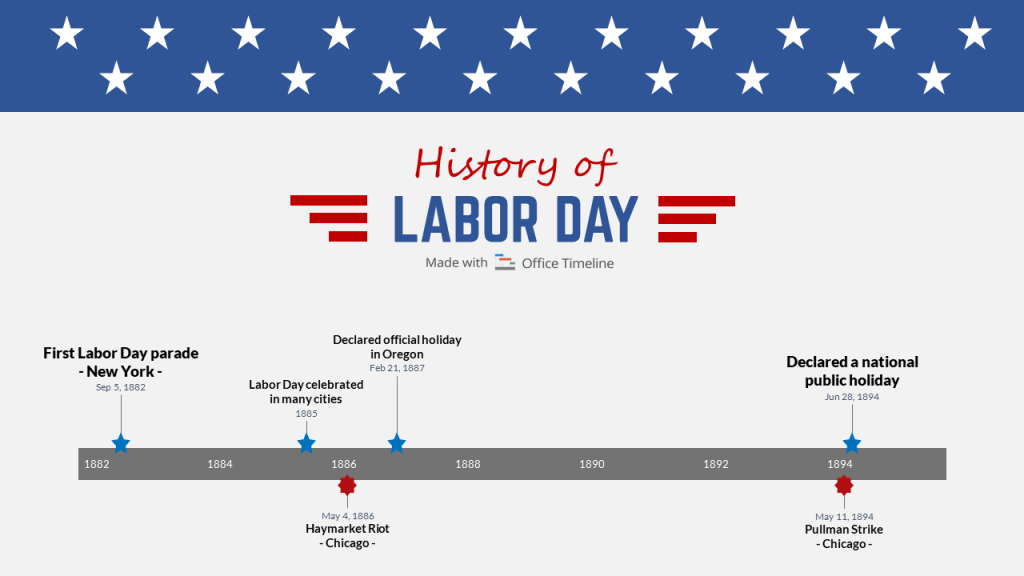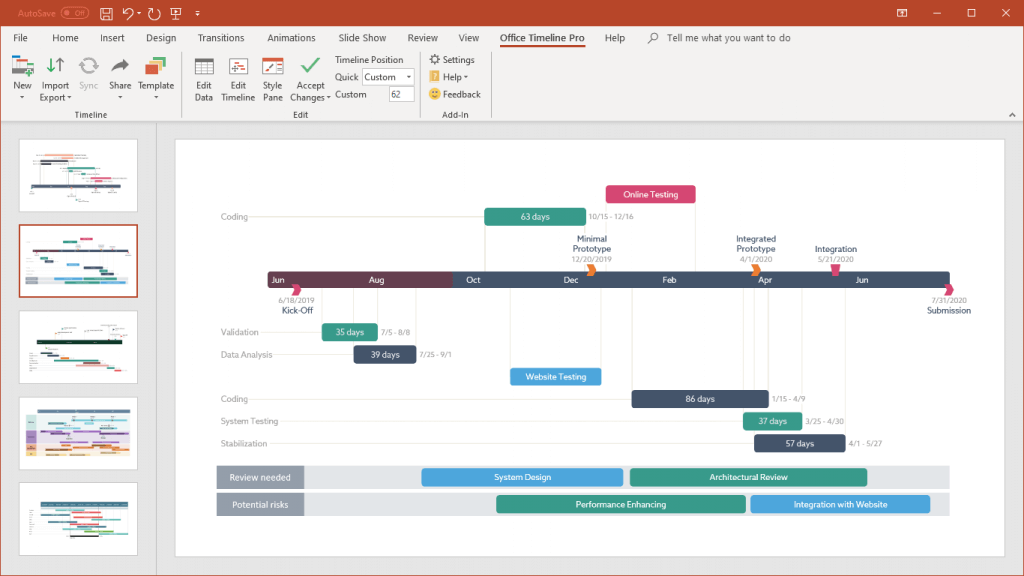Labor Day is just around the corner, and you may be getting ready for the celebrations, but have you ever wondered what the history of Labor Day is, when it started and how it became such a popular holiday?
To help you put events into context, we have created a visual timeline of the Labor Day history, summarizing the key milestones that lead to its adoption across the US and Canada, and included some interesting facts about its origins.

History of Labor Day: a timeline of events
- Early 1880s: trade unionists first started proposing a September holiday called Labor Day
- 1882, September 5: the First Labor Day parade in US history was held in New York City when 10,000 workers took unpaid time off to march from City Hall to Union Square
- 1885: Labor Day was celebrated in many cities across the United States
- 1886, May 4: protest rallies turned violent during the Haymarket Riot in Chicago and there were clashes between labor and the police
- 1887, February 21: Oregon was the first state to pass a law that recognizes Labor Day as an official holiday
- 1894, May 11: employees of the Pullman car company in Chicago went on strike to fight for better working conditions
- 1894, June 28: US president Grover Cleveland signed a law cementing Labor Day as a national public holiday, celebrated on the first Monday in September every year
- 2020 & 2021: celebration events were cancelled due to the pandemic
FAQs about Labor Day
To help you prepare properly for this important celebration, check out this list of the most important questions people ask about Labor Day.
Labor Day is an important public holiday in the United States and Canada, observed on the first Monday in September. Its purpose is to honor the contributions and achievements of American workers and to push the agenda for better employment conditions.
This holiday was created by the Labor movement in the late 19th century at a time when the American industry was growing rapidly, and workers were often mistreated. Labor leaders and activists pushed for a special day to recognize the struggles of the laboring classes.
Today, Labor Day weekend (Labor Day Monday and the preceding weekend) is filled with celebrations like parades, picnics, fireworks, and barbecues. Also, just like Memorial Day marks the unofficial start of the summer, for many young Americans Labor Day marks the unofficial end of the summer, the start of the American football season, and the beginning of school.
Labor Day traces its origins back to the 1880s, when Labor unions organized rallies and protests to call for shorter working days and better conditions. The first Labor Day parade was held on September 5, 1882 and more than 10,000 workers participated. It became such an important event that in 1894 it was declared a national public holiday and it has been celebrated ever since.
Both Labor Day and May Day (International Workers’ Day) celebrate the fight for better working conditions, but after the Haymarket Riot that took place in May 1894, US president Grover Cleveland publicly supported the September date as a better alternative to calm down inflamed spirits.
About the Labor Day history timeline
The Labor Day visual timeline was created using Office Timeline, an award-winning timeline maker that helps you create a clear visual representation of any string of events in PowerPoint. You can download this Labor Day timeline as a PowerPoint file for free and use it in your projects.
Download the free edition to create a timeline slide or Gantt chart with just a few clicks or get the 14-day free trial to unlock more powerful features that help you create complex project roadmaps and other visuals.

Turn project data into professional timelines
Get the advanced features of Office Timeline Pro+ free for 14 days.
Get free trial